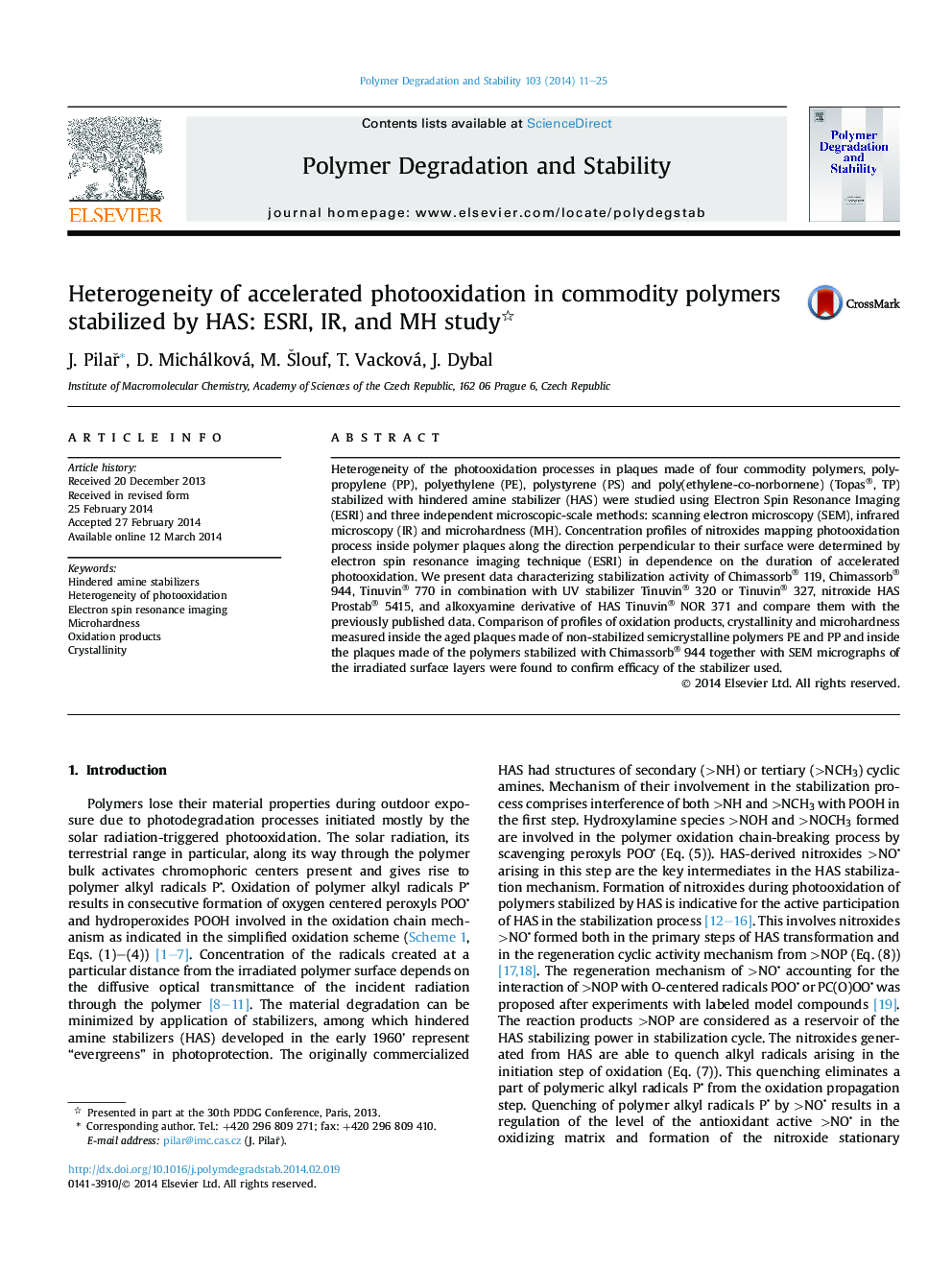| Article ID | Journal | Published Year | Pages | File Type |
|---|---|---|---|---|
| 5201944 | Polymer Degradation and Stability | 2014 | 15 Pages |
Heterogeneity of the photooxidation processes in plaques made of four commodity polymers, polypropylene (PP), polyethylene (PE), polystyrene (PS) and poly(ethylene-co-norbornene) (Topas®, TP) stabilized with hindered amine stabilizer (HAS) were studied using Electron Spin Resonance Imaging (ESRI) and three independent microscopic-scale methods: scanning electron microscopy (SEM), infrared microscopy (IR) and microhardness (MH). Concentration profiles of nitroxides mapping photooxidation process inside polymer plaques along the direction perpendicular to their surface were determined by electron spin resonance imaging technique (ESRI) in dependence on the duration of accelerated photooxidation. We present data characterizing stabilization activity of Chimassorb® 119, Chimassorb® 944, Tinuvin® 770 in combination with UV stabilizer Tinuvin® 320 or Tinuvin® 327, nitroxide HAS Prostab® 5415, and alkoxyamine derivative of HAS Tinuvin® NOR 371 and compare them with the previously published data. Comparison of profiles of oxidation products, crystallinity and microhardness measured inside the aged plaques made of non-stabilized semicrystalline polymers PE and PP and inside the plaques made of the polymers stabilized with Chimassorb® 944 together with SEM micrographs of the irradiated surface layers were found to confirm efficacy of the stabilizer used.
